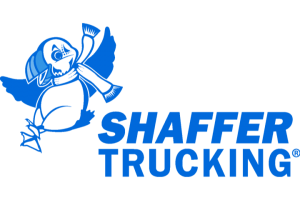Super 10 Transmission / Clutch Brake
Welcome! This is your personal online trainer. I will strive to provide insightful and 100% accurate information regarding questions you have about the first few months in the life of a new driver--from driving tips to industry policies. Get in on the action.
Q:
I'm currently driving a Peterbilt. The company I'm employed with is switching to Centuries with Super 10 transmissions. I need to learn this tranny soon. Any suggestions?
A:
The Super 10 is a VERY easy transmission to learn and many drivers refer to it as the "lazy man's" transmission. The transmission was designed for ease of shifting and newbies do well with it because the Super 10 eliminates a lot of shifts that require moving the gearshift from one gear to another! You only need to move the gearshift lever four times to get into the top gear. The primary shifts (where you move the gearshift) are made the same way that you shift any other transmission. The difference with the Super 10 is the use of the splitter. There is a splitter (or thumb lever) on the side of the shifter that you use your right thumb to change the gears with by moving this lever forward or backward. Shifting the Super 10 well is all about PRE-selecting gears.
To UP-shift the transmission:
1.) Truck in gear (third gear is okay if lightly loaded).
2.) Release the clutch and start the truck moving. Flip the thumb switch forward (to PRE select fourth gear).
3.) Ease up on the accelerator (drop rpm's) and the transmission "automatically" shifts into fourth gear.
4.) As soon as the transmission shifts, IMMEDIATELY move the selector back to the rear to PRE-select fifth gear.
5.) Raise rpm's, double clutch and move the gearshift lever to 5th gear. You will hear the "range" change when you pass the gearshift through the neutral position. Release the clutch and you are in fifth gear. Repeat this up-shift procedure until you reach top gear or a gear that allows you to stay at the speed limit.
To DOWN-shift the transmission:
1.) From top gear, move the thumb selector to the rear (PRE select ninth gear).
2.) When the speed drops and the rpm's are low enough (usually around 1000 rpm's), quickly raise the rpm's and the transmission "automatically" down shifts into the next lower gear.
3.) As soon as the transmission shifts, PRE select the next lower gear by moving the thumb selector forward. Drop the rpm's, double clutch, raise the rpm's and move the gearshift to the next lower gear. The transmission once again will change ranges when you move the gearshift through the neutral position.
4.) Continue until you reach the proper speed and gear.
I know this sounds like a lot of work, but you will be okay as soon as you get a few shifts in. Like most drivers you'll probably learn to love the Super 10.
Q:
What is the clutch brake? Why is it there? What is the proper use of it? I know of course, that the clutch is engaged at approximately half pedal throw and this clutch brake thing is engaged at full pedal throw.
A:
The term "clutch brake" more or less describes what its job is. To describe what the clutch brake actually does, I'll try and give a GENERAL description of how the transmission works. This description will not fit 100 % for every type of transmission in use today, but hopefully it will explain why a clutch brake is needed in the first place. A truck transmission is a totally different breed than the transmission in cars and small trucks! To shift gears in a car, you push the clutch to the floor and move the gearshift lever from one gear to another. There are synchronizers between the gears that allow you to shift into any gear at any speed. In a truck you must push the clutch in a few inches, release the clutch and then push in the clutch again and move the gearshift into the next gear (double clutch). You must be at the right speed for the selected gear or the transmission will not accept the gear.
To get these transmissions to shift gears smoothly, you must act as the synchronizer and match engine speed and road speed to get the truck into the proper gear. This is accomplished by using the tachometer to tell you engine speed (rpm's) and the speedometer to tell you road speed (miles or kilometers per hour). When shifting a truck you must be at (or near) the correct rpm for the transmission to accept the proper gear for that speed! There are speed ranges for gears. You cannot just push in the clutch and select any gear like your car.
Now here's why you need a clutch brake. When at an idle, the engine is turning, the clutch is out and the transmission is also turning. When you want to place the truck in gear you must make the transmission "match" the road speed. So how do you match road speed when it's ZERO? You must stop the transmission from turning. This is accomplished by using the clutch brake. It's basically a simple looking two-piece metal disk with an abrasive surface (something like a brake pad). You engage the clutch brake by pushing the clutch all the way to the floor. This slows the transmission to a stop and you may then select and place the transmission in gear.
The clutch brake is also why it is sometimes difficult to learn to drive trucks. If you are pushing the clutch in too far (or to the floor like your car) the clutch brake starts trying to slow or stop the transmission and you cannot match the road speed to the engine speed because the transmission is now slowing down or stopped. This is why gears grind and you sometime cannot get into a higher or lower gear.
Written by: Fozzy















